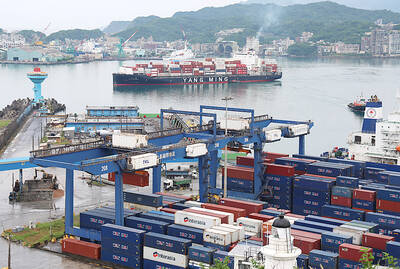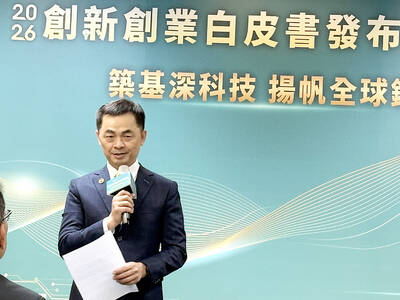When rice farmers started producing yields nine times larger than normal in the Malian desert near the famed town of Timbuktu a decade ago, a passerby could have mistaken the crop for another desert mirage.
Rather, it was the result of an engineering feat that has left experts in the nation in awe — but one that has yet to spread widely through Mali’s farming community.
“We must redouble efforts to get political leaders on board,” said Djiguiba Kouyate, a coordinator in Mali for German development agency GIZ.
With hunger a constant menace, Malians are cautiously turning to a controversial farming technique, known as rice intensification, to adapt to the effects of climate change.
The method, pioneered in Madagascar in 1983, has raised hopes that Mali’s small-scale rice farmers might be able to increase their productivity to meet the country’s gargantuan appetite for the grain.
Consumption of the staple stood at about 72kg of rice per person in 2014, according to the latest data Mali’s National Directorate of Statistics has made public — and demand is continuing to grow.
Dubbed the “system of rice intensification” (SRI), the new rice production method involves planting fewer seeds of traditional rice varieties and taking care of them following a strict regime.
Seedlings are transplanted at a very young age and spaced widely. Soil is enriched with organic matter and must be kept moist, although the system uses less water than traditional rice farming.
SRI is used on both irrigated and non-irrigated land, meaning it is possible to cultivate rice even in Mali’s desert, pilots conducted by the US Agency for International Development have shown.
Up to 20 million farmers use rice intensification in 61 countries, including in Sierra Leone, Senegal and the Ivory Coast, said Norman Uphoff, a senior adviser at the SRI International Network and Resources Center at Cornell University in the US.
Rice plants grown following the method live longer because, given more space, more oxygen and less water, their roots grow bigger and deeper, so they are more resilient to drought and do not deteriorate under flooding, he said.
However, despite its success, the technique has been embraced with varying degrees of enthusiasm from country to country.
That is because it competes with the improved hybrid and inbred rice varieties that agricultural corporations sell, Uphoff said by telephone.
“Corporate agriculture has a huge stake in this,” he said. The new technique is “not good news for the brand breeders and the seed companies.”
Interest in SRI has mounted as droughts and erratic rainfall become more common, adding urgency to efforts to create a steady stream of food from farmland to cooking pots.
Mali is West Africa’s second-largest rice producer, but it still imports 18 percent of its rice annually, said Abdoulaye Koureissi, national coordinator for a rice farmers platform.
Imports prevent local production from reaching its full potential, he said.
And longer droughts and other forms of unpredictable weather are destroying an ever-larger share of crops across the country, where nearly half the adult population suffered from stunting as children due to malnutrition, according to the UN.
Malian authorities are looking for ways to reduce imports and become self-sufficient in rice, Kouyate said.
For Faliry Boly, who heads a rice-growing association, the prospect of rice becoming a “white gold” for Mali should spur on authorities and farmers to adopt rice intensification.
The method could increase yields while also offering a more environmentally friendly alternative, including by replacing chemical fertilizers with organic ones, he said.
What is more, rice intensification naturally lends itself to Mali’s largely arid climate, he said.
Rice intensification uses up to 40 percent less water than traditional rice-growing methods, Kouyate said.
This year, about 100 small-scale farmers were trained in the method through a GIZ-backed effort, Kouyate said, and hundreds more have been trained in other areas of Mali.
Yet, rice intensification has remained largely experimental, with no governmental policy in place to bolster the adoption of the practice, Kouyate added.
Another obstacle is that many farmers using techniques hundreds of years old are often reluctant to try new ways of growing rice, experts said.
Koureissi said he has also seen farmers discouraged by the time investment required to learn the new method, teach it to their farmhands and then practice it.
Rice intensification “asks for a lot of time spent in planting rice, because the seedlings are planted very young, eight to 15 days old, maximum,” he said.
Additional reporting by Sebastien Malo in New York

CHIP RACE: Three years of overbroad export controls drove foreign competitors to pursue their own AI chips, and ‘cost US taxpayers billions of dollars,’ Nvidia said China has figured out the US strategy for allowing it to buy Nvidia Corp’s H200s and is rejecting the artificial intelligence (AI) chip in favor of domestically developed semiconductors, White House AI adviser David Sacks said, citing news reports. US President Donald Trump on Monday said that he would allow shipments of Nvidia’s H200 chips to China, part of an administration effort backed by Sacks to challenge Chinese tech champions such as Huawei Technologies Co (華為) by bringing US competition to their home market. On Friday, Sacks signaled that he was uncertain about whether that approach would work. “They’re rejecting our chips,” Sacks

Taiwan’s exports soared 56 percent year-on-year to an all-time high of US$64.05 billion last month, propelled by surging global demand for artificial intelligence (AI), high-performance computing and cloud service infrastructure, the Ministry of Finance said yesterday. Department of Statistics Director-General Beatrice Tsai (蔡美娜) called the figure an unexpected upside surprise, citing a wave of technology orders from overseas customers alongside the usual year-end shopping season for technology products. Growth is likely to remain strong this month, she said, projecting a 40 percent to 45 percent expansion on an annual basis. The outperformance could prompt the Directorate-General of Budget, Accounting and

NATIONAL SECURITY: Intel’s testing of ACM tools despite US government control ‘highlights egregious gaps in US technology protection policies,’ a former official said Chipmaker Intel Corp has tested chipmaking tools this year from a toolmaker with deep roots in China and two overseas units that were targeted by US sanctions, according to two sources with direct knowledge of the matter. Intel, which fended off calls for its CEO’s resignation from US President Donald Trump in August over his alleged ties to China, got the tools from ACM Research Inc, a Fremont, California-based producer of chipmaking equipment. Two of ACM’s units, based in Shanghai and South Korea, were among a number of firms barred last year from receiving US technology over claims they have

BARRIERS: Gudeng’s chairman said it was unlikely that the US could replicate Taiwan’s science parks in Arizona, given its strict immigration policies and cultural differences Gudeng Precision Industrial Co (家登), which supplies wafer pods to the world’s major semiconductor firms, yesterday said it is in no rush to set up production in the US due to high costs. The company supplies its customers through a warehouse in Arizona jointly operated by TSS Holdings Ltd (德鑫控股), a joint holding of Gudeng and 17 Taiwanese firms in the semiconductor supply chain, including specialty plastic compounds producer Nytex Composites Co (耐特) and automated material handling system supplier Symtek Automation Asia Co (迅得). While the company has long been exploring the feasibility of setting up production in the US to address